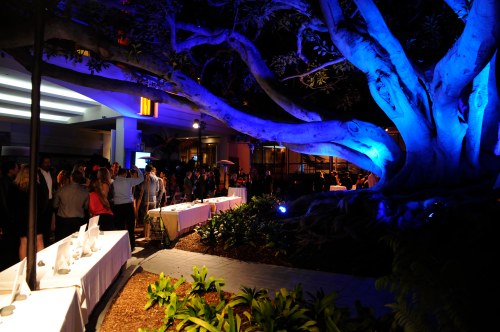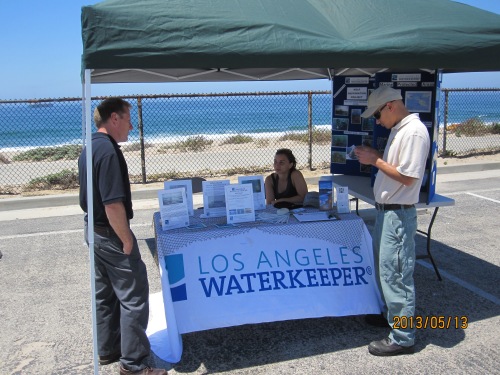I get a lot of questions from people interested in volunteering in one of our water quality monitoring programs (SWAT and DrainWatch). One of the most common ones is, “What do you test for?”. The simple answer is we test parameters like pH, TSS, DO, FIB’s, dissolved metals, COD, etc. But that’s about the time I see people’s eyes glaze over, so let’s break it down and start from the beginning.
What does water quality mean? And how do we measure it?
All water is of a certain “quality” (and you can’t tell just by looking at it), but what does “water quality” really mean? Water full of dirt and grime might work fine for your garden or water with algae and aquatic organisms might be suitable for swimming but would you want to drink it? Water quality can be thought of as a measure of the suitability of water for a particular use based on selected physical, chemical, and biological characteristics. Water thats supports fish or is used for recreation and swimming have different water quality requirements than water used for say, drinking. A set of physical, chemical and biological standards against which compliance can be assessed exist for all our rivers, streams, lakes and coastal waters. These standards are what we refer to when we measure water quality.
Here in Los Angeles, toxic substances and high populations of microorganisms can present health hazards that impact swimming, fishing and boating and affect wildlife that rely on the water for drinking and habitat. California and Los Angeles Regional water quality laws specify protection of fisheries and recreational use, and require, as a minimum, retention of current quality standards.
So what do we test for at LA Waterkeeper?
Our water quality monitoring programs, SWAT and DrainWatch, focus on the chemical and biological parameters that impact the beneficial use of our local waters. This includes testing for high populations of bacteria that indicate threats to swimmers and measuring heavy metals like copper and lead that adversely affect fish and aquatic species living in our rivers and off our coast.
Here are some of the most common water quality tests that we use at LA Waterkeeper, whether at our monthly volunteer water quality sampling along Ballona Creek or while monitoring stormwater runoff from industrial sites:
FIBs-Fecal Indicator Bacteria– FIB, like E.coli and enterococcus, are natural inhabitants of the gastrointestinal tract of humans and other warm-blooded animals. These bacteria in general cause no harm but are an indication of an increased likelihood of, harder to test for, harmful pathogens present in waters. Unlike FIB, pathogenic microorganisms such as bacteria, viruses, and protozoa do pose a health risk to humans.
TSS-Total Suspended Solids– TSS concentrations and turbidity (a measurement of light scatter) both indicate the amount of solids in the water, whether mineral or organic. High concentrations of particulates can cause increased sedimentation and siltation in a stream, which in turn can ruin critical habitat for fish and other aquatic life. Suspended particles also provide attachment places for pollutants such as metals and bacteria, offering them a free ride.
pH- pH is a measure of the acidity in water. To protect aquatic life, natural waters must maintain a pH range of 6-8 (or 6-9). Beyond this range, the pH can cause harmful ecological effects such as the death of invertebrates that are not resistant to extreme pH values.
COD-Chemical Oxygen Demand- COD is commonly used to indirectly measure the amount of organic compounds in water, making it a useful test of water quality. Measuring organic compounds in the water tells us how much oxygen total is required so that natural processes such as the conversion of organic matter into carbon dioxide are not jeopardized.
Dissolved metals- Some metals are naturally formed through geological processes and are essential for life; normally, once trace amounts of these metals enter the water. Metal, however, can also cause chronic and acute poisoning. Industrial activities, like scrap metal recyling and mining may sometimes lead to the contamination of a water resource with toxic metals such as arsenic, barium, chromium, copper, nickel and mercury.
What does water quality mean to you?
To find out more information or volunteer for our water quality monitoring programs, contact me at lara@lawaterkeeper.org
-Lara Meeker, Watershed Program Manager












You must be logged in to post a comment.